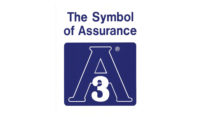Improving hygiene in food production starts with refined design of processing and packaging equipment. For manufacturers engaged in the production of foods with strict requirements in terms of purity (e.g. non-gluten, peanut-free etc.), the appropriate design for equipment like vertical baggers and horizontal flow wrappers can reduce the possibility of cross contamination between different product batches.
While a number of regional regulatory agencies, such as the FDA and the British Retail Consortium (BRC) have established standards for equipment design to diminish food contamination risks, there is no global comprehensive legislation or regulatory standard for design. However, there is a clear trend toward more regulation, which reflects intensifying concerns over the global food supply.
To help manufacturers meet various food safety standards, equipment providers such as Bosch Packaging Technology, New Richmond, Wis., offer several options to enhance the hygienic design of processing and packaging machinery in line with several key principles.
Applications demanding hygiene
Fresh, frozen and dairy foods are product categories that require high levels of hygiene. These are growing markets, particularly in developing regions where the middle class is expanding. Fresh foods include salads, meats, cheeses and fish that tend to spoil after a few days in the refrigerator. Frozen foods encapsulate a large range of products, from chicken and fish to vegetables, in which hygienically designed vertical bagging and tray forming equipment are well-suited.
The confectionery and baked goods sectors also benefit from hygienic processing and packaging equipment. These high-margin products require gentle handling since many of them, such as biscuits, are prone to breakage. A hygienic design prevents broken pieces from accumulating in hidden crevices and clogging equipment. Easy and thorough cleaning is crucial when needing to switch between different products and for separating nut-free and nut-containing products to reduce the risk of allergen contamination.
The principles of hygienic design
When selecting equipment to meet the latest food safety regulations, here are some tips to consider:
Clean it up. Crevices, nooks and crannies are open invitations to cross contamination. The design should be free of part features that create recesses, gaps and areas that are hard to clean. An open mainframe design makes it easier to prevent food residues from collecting because they are easy to spot and remove.
Reduce the clutter. The goal should be to eliminate as many machine components (mechanical and utility) where food products can accumulate. This includes reducing the number and length of electrical cables, pneumatic and vacuum lines down to a minimum and establishing a clean routing plan.
Minimize flat surfaces. Equipment should be designed to leverage the benefits of gravity. Large flat-to-flat contact surfaces should be avoided along with horizontal surfaces. Sloping surfaces help ensure food residues flow down and drain properly. This prevents food from remaining on surfaces and potentially causing cross contamination.
Simplify cleaning. Easy cleaning must be an intrinsic part of equipment design. Easier access to machine parts makes them easier to clean. Ideally, cleaning is accomplished without removing components, but if component removal is necessary, it should be a tool-less design with no loose parts. Clean surfaces are a pre-requisite for processing foods, and thus all surfaces should be smooth and defect-free. Taking into account the design features above reduces the amount of product residues, which in turn facilitates cleaning.
Provide options. Food manufacturers require varying levels of hygiene depending on what they process and which regional regulations they need to adhere to. Equipment should give users different cleaning choices such as dry, wet or washdowns, to match the specific need.
Ideal construction materials. Your product and cleaning procedures determine the best construction materials for your particular needs. Harsh cleaning agents, frequent high-pressure washdowns etc. determine your choice of material, e.g. stainless steel might be a must. If dry cleaning is applied, food producers can consider an aluminum frame.
Match to requirements. The applied filling hygiene level must match the product’s and manufacturer’s requirements. For liquid and viscous food products, including dairy and desserts, filling technologies with hygiene filling levels from clean, ultra-clean up to aseptic can be applied, depending on product characteristics such as pH value, desired shelf life and non-usage of preservatives. A packaging supplier with aseptic research and a microbiological test laboratory is especially able to fully meet rigorous requirements of dairy food processors.
Be wary of retrofits. When looking to improve hygienic processing, should manufacturers opt to retrofit their existing equipment, or should they purchase something new? Each situation is unique, but generally speaking, food processers will find it more practical to choose equipment that is designed—from concept to completion—with hygiene in mind. In the long run, they’ll be better off and more secure compared to retrofitting existing equipment.
Raising the stakes
In light of regulatory pressures combined with increasing consumer demands for food safety, manufacturers need to look more closely at equipment design. A hygienically designed food processing and packaging line is one of the best ways to defend against costly threats to business. One product recall or negative social media campaign driven by angry consumers can pose serious threats to a company’s bottom line and to its longevity.
Food safety depends on the interaction between a product, packaging material and the equipment on which the product is processed. Truly hygienic packaging ensures that every single machine surface that comes into contact with a product meets the required hygiene standards.
Manufacturers need more than assurances of safety. They also need technologies that increase flexibility and throughput speed, while minimizing downtime for cleaning and maintenance. Hygienic and smart equipment design offers benefits across the board. To ensure the best solution, food manufacturers should seek out single-source solutions providers with expertise in both equipment design and a focus on overall equipment effectiveness.



